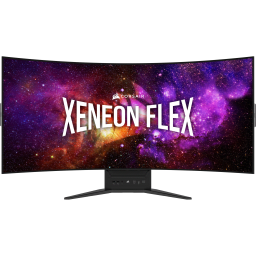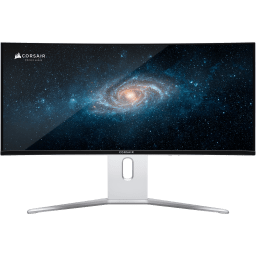GLOSSARY
What is OLED?
OLED stands for Organic Light-Emitting Diode which is a specific type of display panel technology. The main feature that differentiates it from other display technologies is that it does not utilize a backlight, which leads to some big advantages, and a few disadvantages, too.
How Does OLED Work?
In a regular LED or LCD display, the pixels are responsible for color, but need some help in terms of brightness, and that brightness comes from a backlight. This is essentially a big white panel behind the pixels that adds enough brightness to create a decent viewing experience.
OLEDs differ in that each pixel produces its own light, so there is no need for a backlight. Because each pixel is self-illuminated, when the input denotes that a certain part of the screen should be pure black, the pixels there are entirely switched off. This is something other types of displays cannot do, as even one pixel needing to be lit up necessitates the backlight being on. (Dimming zones can mitigate this to an extent, but that's beyond the scope of this page.)

What Are the Advantages of an OLED TV?
Because OLED TVs do not need a backlight, you get a viewing experience that is far more “accurate”. We mentioned earlier that other types of displays have a backlight on at all times in order to illuminate the pixels. This creates a less-than-ideal experience as it means that the screen cannot achieve true black. If you look closely at a non-OLED TV, you notice that in scenes where there is supposed to be no light whatsoever, it’s actually very dark gray, not black.
It's not just dark scenes that benefit from an OLED display. Any scene will be better, as OLEDs are typically far more color-accurate than other types of TV. One of the reasons for this is that pesky backlight, once again. Regardless of what color the pixel is trying to display, the backlight will invariably affect its color. So, the image you get as a viewer won’t be quite what was intended. For most people, this is not of concern, but cinephiles and other picky types can find this sort of discrepancy between the intended image and the eventual image unacceptable.

OLEDs also typically have a better response time compared to other display technologies. While this may not make much difference for watching TV and movies, it is very handy for gaming, which is why some of the best gaming monitors use OLED panels. Response time refers to how long it takes for a pixel to change from one color to another. The faster the response time, the smoother the gaming experience. We wrote a whole page about response time that you can read for more information.
Another, albeit niche, advantage of OLED displays is that they are flexible, which means that monitors like the XENEON FLEX are possible.
What Are the Disadvantages of an OLED TV?
The first one to note is the price. OLED is a newer technology than LCD or LED, so it hasn’t had as much time to mature and therefore drop in price. OLED TVs and monitors will be more expensive than other types of display.
Another disadvantage of an OLED TV is that they aren't available in sizes as large as other types of panels. This is not a major issue, as very few people want, need, or have space for TVs larger than 85 inches. While OLED TVs can be found in sizes over 80 or even 90 inches, they are uncommon, and prices increase significantly.
The main downside of OLEDs, however, is burn-in, which occurs when certain pixels stick to a certain color when they should have changed. We cover this in more detail in the next section.
What is OLED Burn-in?
OLED burn-in is an issue where pixels get “stuck”, causing the display to show a feint version of a previous image. This is more likely when there is a part of the image that stays static for long periods, such as a taskbar in Windows or a HUD in an FPS.
When OLEDs first became popular, this issue was far more prevalent. However, today it takes much longer for an OLED to start experiencing burn-in. Don’t get us wrong, it will still happen eventually, somewhere down the line, but it just takes a lot longer now.

The improvements here are in part due to the technology just maturing and therefore getting more reliable, and in part due to some features the manufacturers implement to stave off the burn-in. An example of this is the “Orbit” feature in the XENEON 34WQHD240-C gaming monitor. This periodically “moves” the entire image by a single pixel every 3 minutes so that no pixels are constantly displaying the exact same color.
Is an OLED TV Worth it?
If you’re really keen on movies and TV, then we think it certainly is. The image is more accurate, the blacks are truly black, and the final image will overall be closer to what was intended by the people who made the content.
The same goes for gaming. The experience will be more vivid, more lifelike, and the aforementioned improvement in response time is great for competitive gaming.
However, OLED screens are still new enough that the prices are still significantly higher than their regular LED and LCD equivalents. Those looking to save a buck might not find the advantages worth the additional cost, but if you can stomach the premium, once you get an OLED TV or monitor, you’ll find it very difficult to go back.
PRODUCTS IN ARTICLE








